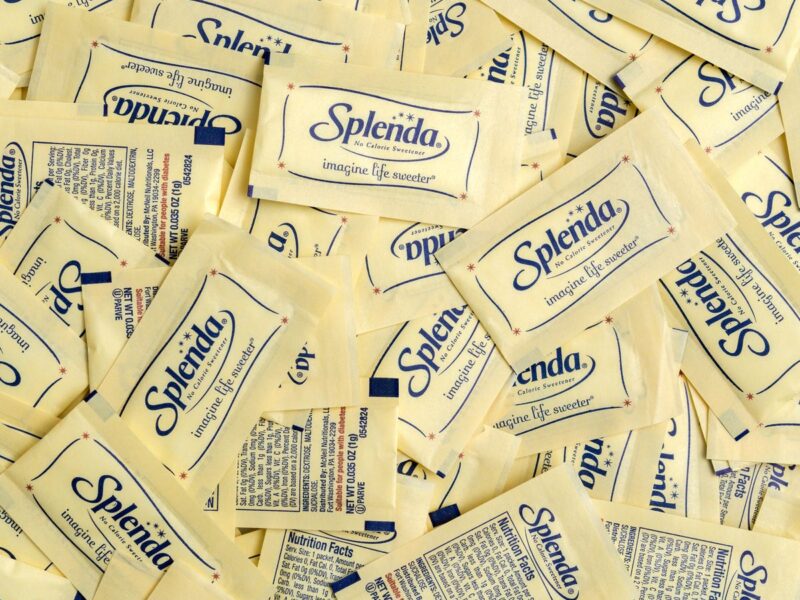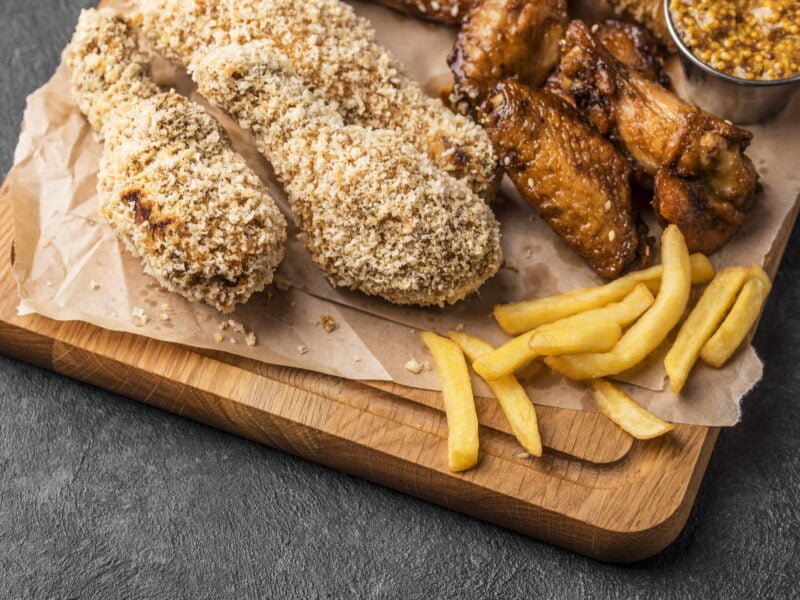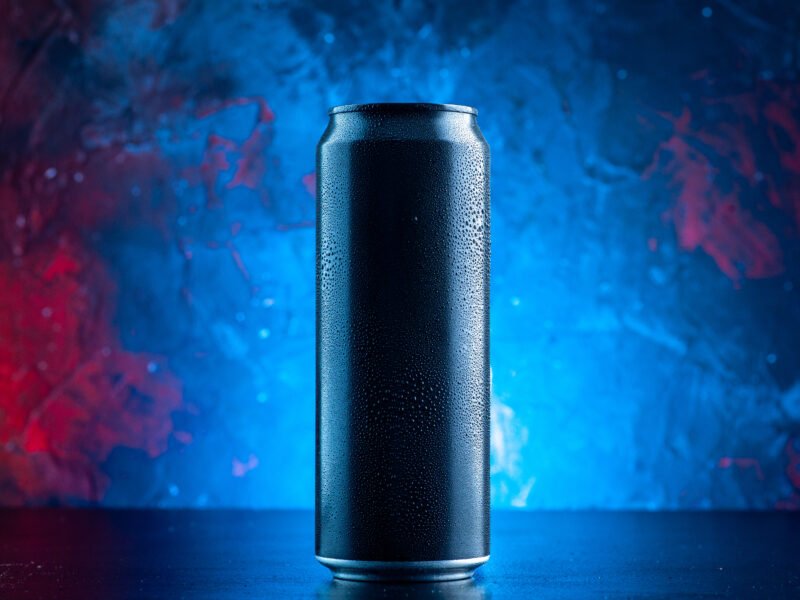Think of trying wine like going on a treasure hunt where you haven’t found your favorite treasure yet. We know not everyone likes wine right away. It’s like how some people don’t like beer or strong drinks. But we’ve made a special list of wines that might change your mind.
This list is like a fun guide to help you start exploring wine. It will show you the difference between sweet and dry wines, what it means when a wine tastes “earthy” versus “fruity,” and how red wine is different from white wine.
We believe that if you don’t like wine, maybe you just haven’t found the right one for you yet. We’re not saying you’ll love wine after trying these, but we hope you’ll give it a try. If you still don’t like wine after that, it’s okay. But why not explore and see if there’s a wine out there that you might enjoy?
This list is like a fun guide to help you start exploring wine. It will show you the difference between sweet and dry wines, what it means when a wine tastes “earthy” versus “fruity,” and how red wine is different from white wine.
We believe that if you don’t like wine, maybe you just haven’t found the right one for you yet. We’re not saying you’ll love wine after trying these, but we hope you’ll give it a try. If you still don’t like wine after that, it’s okay. But why not explore and see if there’s a wine out there that you might enjoy?
A bottle of wine contains more philosophy than all the books in the world.
Louis Pasteur
By Developer
Understanding The Barriers For Non-Wine Drinkers
For many, wine can seem intimidating and inaccessible, creating barriers that deter non-wine drinkers from exploring this ancient beverage. These barriers are not just about personal taste preferences but also involve cultural, educational, and psychological factors that influence one’s willingness or ability to enjoy wine.
Cultural Barriers: In regions or communities where wine isn’t a staple part of the culture, there may be less exposure to wine, making it feel like an unfamiliar or elitist choice. This lack of familiarity can make non-wine drinkers hesitant to try wine or include it in social settings.
Educational Barriers: The vast array of wine types, grapes, and regions can overwhelm beginners. Without basic knowledge of how to select, taste, and appreciate wine, potential enthusiasts might feel lost and discouraged. The wine industry often uses terminology that can seem cryptic to novices, adding to the intimidation.
Psychological Barriers: Some individuals may have had a negative initial experience with wine, such as trying a wine that didn’t suit their taste preferences, which can create a lasting aversion. Others might associate wine with snobbery or perceive it as a drink only for certain occasions, deterring them from experimenting with wine in more casual settings.
Taste Preferences: Wine’s complex flavors, which can range from very dry to sweet, and its acquired taste profile, such as the presence of tannins in red wine, might not appeal to everyone initially. Those accustomed to sweeter, less complex beverages may find wine challenging to appreciate.
Cost Perception: Wine can sometimes be perceived as an expensive hobby, with the assumption that only high-priced wines are of good quality. This perception can prevent individuals from exploring wine, fearing a significant financial commitment.
Health Concerns: For some, health considerations play a role in avoiding alcohol, including wine. Concerns about calories, sugar content, or the negative effects of alcohol on health can be deterrents.
Cultural Barriers: In regions or communities where wine isn’t a staple part of the culture, there may be less exposure to wine, making it feel like an unfamiliar or elitist choice. This lack of familiarity can make non-wine drinkers hesitant to try wine or include it in social settings.
Educational Barriers: The vast array of wine types, grapes, and regions can overwhelm beginners. Without basic knowledge of how to select, taste, and appreciate wine, potential enthusiasts might feel lost and discouraged. The wine industry often uses terminology that can seem cryptic to novices, adding to the intimidation.
Psychological Barriers: Some individuals may have had a negative initial experience with wine, such as trying a wine that didn’t suit their taste preferences, which can create a lasting aversion. Others might associate wine with snobbery or perceive it as a drink only for certain occasions, deterring them from experimenting with wine in more casual settings.
Taste Preferences: Wine’s complex flavors, which can range from very dry to sweet, and its acquired taste profile, such as the presence of tannins in red wine, might not appeal to everyone initially. Those accustomed to sweeter, less complex beverages may find wine challenging to appreciate.
Cost Perception: Wine can sometimes be perceived as an expensive hobby, with the assumption that only high-priced wines are of good quality. This perception can prevent individuals from exploring wine, fearing a significant financial commitment.
Health Concerns: For some, health considerations play a role in avoiding alcohol, including wine. Concerns about calories, sugar content, or the negative effects of alcohol on health can be deterrents.
Wine Education Resources For Non-Wine Drinkers
For non-wine drinkers looking to explore and learn more about wine, there are plenty of resources available to make the journey more accessible and enjoyable. Here are some wine education resources tailored to beginners:
Wine Tasting Classes: Many local wine shops or wineries offer wine tasting classes. These classes often include tastings of different wines and provide guidance on how to appreciate the flavors and characteristics of each.
Wine Books:There are numerous beginner-friendly wine books available, such as “Wine Folly: The Essential Guide to Wine” by Madeline Puckette and Justin Hammack or “Wine for Dummies” by Ed McCarthy and Mary Ewing-Mulligan. These books break down wine basics in an easy-to-understand manner.
Online Courses: Platforms like Coursera, Udemy, and MasterClass offer online wine courses taught by experts in the field. These courses cover everything from wine regions to grape varieties and wine pairing.
Wine Apps: Apps like Vivino, Delectable, and Wine Spectator can help you learn more about wines by scanning labels, reading reviews, and accessing wine ratings.
Wine Tasting Events: Attend local wine tasting events or wine festivals in your area. These events often feature a variety of wines, and you can learn about different styles and preferences by trying them.
YouTube Channels: There are numerous YouTube channels dedicated to wine education, such as “Wine Spectator,” “Wine Access,” and “Wine Oh TV.” These channels provide video content on wine basics, tastings, and wine-related topics.
Wine Blogs: Explore wine blogs like Wine Folly, Wine Enthusiast, and Wine Spectator for informative articles, guides, and recommendations.
Wine Podcasts: Tune in to wine-focused podcasts like “Wine for Normal People” and “The Crush” for discussions on wine basics and trends.
Wine Clubs: Joining a wine club can be a fun way to receive curated wine selections, tasting notes, and educational materials regularly.
Wine Forums: Engage with online wine communities and forums like Wine Berserkers or Wine Spectator’s online forum to ask questions, share experiences, and learn from fellow wine enthusiasts.
Wine Tasting Classes: Many local wine shops or wineries offer wine tasting classes. These classes often include tastings of different wines and provide guidance on how to appreciate the flavors and characteristics of each.
Wine Books:There are numerous beginner-friendly wine books available, such as “Wine Folly: The Essential Guide to Wine” by Madeline Puckette and Justin Hammack or “Wine for Dummies” by Ed McCarthy and Mary Ewing-Mulligan. These books break down wine basics in an easy-to-understand manner.
Online Courses: Platforms like Coursera, Udemy, and MasterClass offer online wine courses taught by experts in the field. These courses cover everything from wine regions to grape varieties and wine pairing.
Wine Apps: Apps like Vivino, Delectable, and Wine Spectator can help you learn more about wines by scanning labels, reading reviews, and accessing wine ratings.
Wine Tasting Events: Attend local wine tasting events or wine festivals in your area. These events often feature a variety of wines, and you can learn about different styles and preferences by trying them.
YouTube Channels: There are numerous YouTube channels dedicated to wine education, such as “Wine Spectator,” “Wine Access,” and “Wine Oh TV.” These channels provide video content on wine basics, tastings, and wine-related topics.
Wine Blogs: Explore wine blogs like Wine Folly, Wine Enthusiast, and Wine Spectator for informative articles, guides, and recommendations.
Wine Podcasts: Tune in to wine-focused podcasts like “Wine for Normal People” and “The Crush” for discussions on wine basics and trends.
Wine Clubs: Joining a wine club can be a fun way to receive curated wine selections, tasting notes, and educational materials regularly.
Wine Forums: Engage with online wine communities and forums like Wine Berserkers or Wine Spectator’s online forum to ask questions, share experiences, and learn from fellow wine enthusiasts.
How To Choose The Best Wine For Non-Wine Drinkers
Choosing the best wine for non-wine drinkers is all about finding something approachable and easy to enjoy. Here are some tips to help pick the right bottle:
Start with Sweeter, Lighter Wines: Sweet wines like Moscato or Riesling are often more palatable for beginners. Their sweetness is familiar and less intimidating than the complexity of drier wines.
Start with Sweeter, Lighter Wines: Sweet wines like Moscato or Riesling are often more palatable for beginners. Their sweetness is familiar and less intimidating than the complexity of drier wines.

Consider Sparkling Wines: Sparkling wines, such as Prosecco or sweet sparkling rosés, can be a great choice. Their bubbly and light nature often appeals to those who aren’t accustomed to drinking wine.
Go for Lower Alcohol Content: Wines with a lower alcohol percentage (around 10-12%) tend to be lighter and easier to drink, making them a good starting point.
Try Fruity Red Wines: If choosing a red wine, opt for fruit-forward varieties like Pinot Noir or Beaujolais. These wines are typically smoother and less tannic.
Ask for Recommendations: Don’t hesitate to ask for advice from a wine seller or at a restaurant. They can often recommend wines that are popular among new wine drinkers.
Read the Label: Look for terms like “sweet,” “light-bodied,” or “fruity” on the label, which are indicators of a more approachable wine.
Sample Through Tasting: If possible, attend a wine tasting. It’s a great way to try different types of wine and discover personal preferences without committing to a full bottle.
Go for Lower Alcohol Content: Wines with a lower alcohol percentage (around 10-12%) tend to be lighter and easier to drink, making them a good starting point.
Try Fruity Red Wines: If choosing a red wine, opt for fruit-forward varieties like Pinot Noir or Beaujolais. These wines are typically smoother and less tannic.
Ask for Recommendations: Don’t hesitate to ask for advice from a wine seller or at a restaurant. They can often recommend wines that are popular among new wine drinkers.
Read the Label: Look for terms like “sweet,” “light-bodied,” or “fruity” on the label, which are indicators of a more approachable wine.
Sample Through Tasting: If possible, attend a wine tasting. It’s a great way to try different types of wine and discover personal preferences without committing to a full bottle.
Recommendations For Affordable And Approachable Wines
Finding affordable and approachable wines can be a great way to start your journey into the world of wine. Here are a few recommendations to get you started:
Apothic Red: This California red blend offers a smooth and easy-drinking experience, with flavors of dark fruit and vanilla.
Santa Margherita Pinot Grigio: This Italian white wine is crisp and refreshing, with notes of citrus and pear.
La Marca Prosecco: A popular choice for celebrations, this Italian sparkling wine is light and bubbly, with flavors of green apple and honeysuckle.
Kim Crawford Sauvignon Blanc: This New Zealand white wine is known for its vibrant flavors of tropical fruit and citrus.
Apothic Red: This California red blend offers a smooth and easy-drinking experience, with flavors of dark fruit and vanilla.
Santa Margherita Pinot Grigio: This Italian white wine is crisp and refreshing, with notes of citrus and pear.
La Marca Prosecco: A popular choice for celebrations, this Italian sparkling wine is light and bubbly, with flavors of green apple and honeysuckle.
Kim Crawford Sauvignon Blanc: This New Zealand white wine is known for its vibrant flavors of tropical fruit and citrus.
Food And Wine Pairings For Non-Wine Drinkers
Food and wine pairings for non-wine drinkers can turn a meal into an enjoyable and approachable experience with wine. Here are some simple, fail-safe pairings that can enhance the flavors of both the food and the wine, making the experience more enjoyable for those new to wine:
Sweet Wines with Spicy Foods: A sweet Riesling or Moscato pairs well with spicy dishes. The sweetness of the wine can help balance the heat of the food, creating a harmonious taste experience.
Sparkling Wines with Salty Snacks: Prosecco or a sweet sparkling wine goes well with salty snacks like popcorn or chips. The bubbles and crispness of the wine can cut through the saltiness.
Fruity Red Wines with Grilled Meats: A fruit-forward red wine like Pinot Noir or Merlot pairs nicely with grilled meats. The fruity notes in the wine complement the smokiness and richness of the meat.
Light White Wines with Seafood: A light and crisp white wine, like Sauvignon Blanc or Pinot Grigio, is great with seafood. It doesn’t overpower the delicate flavors of the fish.
Rosé with Light Pasta and Salads: Rosé, known for its versatility, pairs well with light pasta dishes or salads. Its refreshing qualities can enhance the freshness of the meal.
Sweet White Wines with Desserts: Pair a sweet dessert wine like a late-harvest Riesling with fruity desserts or a Moscato with lighter desserts like sorbets.
Sweet Wines with Spicy Foods: A sweet Riesling or Moscato pairs well with spicy dishes. The sweetness of the wine can help balance the heat of the food, creating a harmonious taste experience.
Sparkling Wines with Salty Snacks: Prosecco or a sweet sparkling wine goes well with salty snacks like popcorn or chips. The bubbles and crispness of the wine can cut through the saltiness.
Fruity Red Wines with Grilled Meats: A fruit-forward red wine like Pinot Noir or Merlot pairs nicely with grilled meats. The fruity notes in the wine complement the smokiness and richness of the meat.
Light White Wines with Seafood: A light and crisp white wine, like Sauvignon Blanc or Pinot Grigio, is great with seafood. It doesn’t overpower the delicate flavors of the fish.
Rosé with Light Pasta and Salads: Rosé, known for its versatility, pairs well with light pasta dishes or salads. Its refreshing qualities can enhance the freshness of the meal.
Sweet White Wines with Desserts: Pair a sweet dessert wine like a late-harvest Riesling with fruity desserts or a Moscato with lighter desserts like sorbets.
Popular Wine Regions And Their Offerings For Non-Wine Drinkers
The world of wine is vast and diverse, with each wine region offering its own unique characteristics and flavors. As a non-wine drinker, exploring different wine regions can be a great way to expand your palate and discover new wines. Some popular wine regions to consider are:
France: Known for its iconic wines such as Bordeaux, Burgundy, and Champagne, France offers a wide range of wines to suit every taste.
Italy: With its rich history and diverse wine production, Italy is home to many beloved wines, including Chianti, Barolo, and Prosecco.
Spain: Spain is known for its bold and flavorful wines, such as Rioja, Tempranillo, and Cava.
USA: From California’s Napa Valley to Oregon’s Willamette Valley, the United States is producing world-class wines that are worth exploring.
France: Known for its iconic wines such as Bordeaux, Burgundy, and Champagne, France offers a wide range of wines to suit every taste.
Italy: With its rich history and diverse wine production, Italy is home to many beloved wines, including Chianti, Barolo, and Prosecco.
Spain: Spain is known for its bold and flavorful wines, such as Rioja, Tempranillo, and Cava.
USA: From California’s Napa Valley to Oregon’s Willamette Valley, the United States is producing world-class wines that are worth exploring.
Conclusion: Which Wine IS Best For The Non-Wine Drinker?
For those new to the world of wine or hesitant about diving into this rich cultural experience, the journey to finding the perfect wine can be both exciting and accessible. Starting with sweeter, lighter, and less complex wines like Moscato, Riesling, Rosé, or even sparkling options such as Prosecco and Champagne, can serve as a gentle introduction.
These varieties offer a delightful entry point with their fruity flavors and subtle sweetness, making them appealing to beginners and those with a preference for milder tastes. The barriers that non-wine drinkers face—ranging from cultural and educational to psychological and taste preferences—can be navigated with a bit of curiosity and openness to exploration. Affordable and approachable wines are out there, waiting to be discovered, offering a chance to experience the joy and complexity of wine without the intimidation. Embracing wine education resources, from classes to online platforms and apps, can further demystify the wine world, making it more inclusive and enjoyable for everyone.
Ultimately, the best wine for non-wine drinkers is one that suits their personal tastes and opens the door to new culinary adventures, proving that the world of wine is vast and varied enough to include something for everyone.
These varieties offer a delightful entry point with their fruity flavors and subtle sweetness, making them appealing to beginners and those with a preference for milder tastes. The barriers that non-wine drinkers face—ranging from cultural and educational to psychological and taste preferences—can be navigated with a bit of curiosity and openness to exploration. Affordable and approachable wines are out there, waiting to be discovered, offering a chance to experience the joy and complexity of wine without the intimidation. Embracing wine education resources, from classes to online platforms and apps, can further demystify the wine world, making it more inclusive and enjoyable for everyone.
Ultimately, the best wine for non-wine drinkers is one that suits their personal tastes and opens the door to new culinary adventures, proving that the world of wine is vast and varied enough to include something for everyone.





